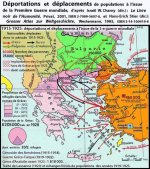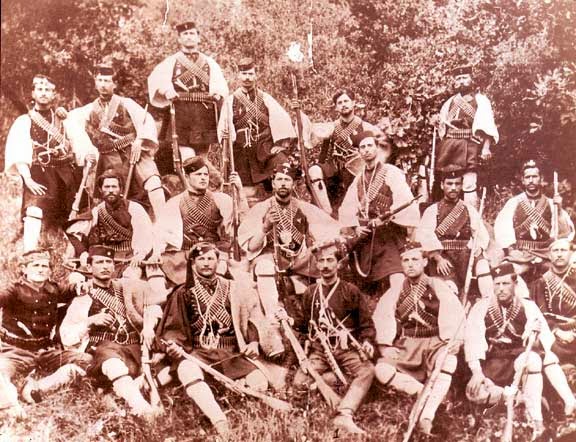As far as I know, Seima Turbino might have not been Uralic speakers. There's not a consensus over them.
hm
might not
might yes,
it was a culture of hg N for certain, so Uralic fits better,
Don't you think.
Besides
The resulting radiocarbon (14C) chronology for the western Siberian sites (22nd–20th centuries cal BC)
Notice the above is the max back, they centuries from Central Asia to reach West Siberia
Hettites who had simmilar are about 1600 BC
Same is the high change of Minyan (NOTICE MINYANS, Not MINOANS) control and culture
to Mycenean control and culture,
ατ 1650 when Hettites are in minor Asia, Myceneans are already here,
so you have to face the dilema,
If Myceneans are from the area, in which Hettites enter, How come they had such similarity, as pre-Hettit culture, Notice Mycenean tombs before 1650 BC, Hatussa 1600 BC. if remember correct.
then you go to the North way, from Yamnaa, to Balkans to South Greece,
there is the other entrance to Greece,
Here you have to find the old Blegen theory, the archiological connection, as described by Giannopoulos.
Why? Cause Mycenean are also the Long Corridor culture, the δρομος as called today, the Σικος and the Πτερον a structure not found in Asia till then, no matter Megalithic structures are even today magnificent.
and their Kurgan are estimated to evolve their way, while their primary earlier form
so Myceneans and kurgans already existed from 2200 BC, in co-existance with Minyans, ?
I did not remember the Archaiologist who found such in Lerna and Leykada.
besides the Mycaenean mettalurgy has nothing to do with Seima Turbino, or with Hettites mettalurgy,
Mycenean is tin vs Copper, Seima is Arsenic vs copper,
Almost same littlelittle bit earlier few centuries but mainly 1 century earlier is the Vucedol-Vatin devstation to Greece, mainly to area of proto-Greeks
the tombs of Cetina as possibly is known to you,
besides we see a strange change to tomb looking like small boxes, non Minoan, since they put them to pottery,
Anyway, it is difficult to distinguish,
but generally we see these strange,
Minyan culture, certainly autochthonus, possible G2 and other, no need to search now
Minoan culture which is J2a with no steppe
No Steppe admixture culture until 2300 BC.
Vucedol vatin culture entrance from North (para-Cetinas) possibly some Hg I
Mycenean culture which is J2a which is ave 14% simmilar even today after the Slavic invasions,
Both populations evolute to Greek till 1600 BC
The Nothern are the proto-Greek or NW dialects or Paleo-Balkan in the area where georgiev puts them
the other is Mycenean and S Greek, a substractum that creates also the inner aspirations of evolution of Greek language, to classical, while some return back due to Makedonian influence in Koine (φορθακα - Βατραχις, Φρεαρ-Βρυση)
the only entrance from East in that era, in the Mycenean world
is the Arzawwa-Asuwa when were hunted by Hettites,
so how come this steppe 14% enter to Myceneans and not to Minoans,
The answer is somewhere above,
or somewhere we can not see until today,
about R1a in balkans
Balkans have a pecculiar very high diversity of R1a,
in other contitions the numerous varities could claim as homeland of r1a Balkans
but we consider it as a sink phenomenon,
the r1a -Z93 found in Thracian tomb is at least a millenium younger,
yet this does not exclude the possibility of being far ancient to pre and proto Thracian or forms that spread from yamnaa
But most possible for me is to be Scythian from Srubnaya.
Anyway Seima Turbino was a culture of N Hg.
although their usage of chariots etc are simmilar to Mycaenean,
but not identical mettalurgy,
tin vs arsenic
The time Distance from W Siberia Seima Turbino to the high transform of culture to Mycenean surely is about 4 centuries, and is allowing such aproache and possibility
Yet the other elements of myceane, as also their genetics, and the continuity of Minyans and NW Greeks hmm ... pale colour
the ave 14% steppe could enter from Arzawa, from Vucedol, even from women slaves and marriage,
if 1 out 10 male of a generation takes foreign women, it is about 5% to next male generation?, or I am wrong,
I am not certain for above but seems logicalThat is all,
suggest you see the minyan minoan mycenean pottery to understand.
Aditional if you want to search deeper,
you must search how much Altaic component have the R1a cultures from the main 3 types of R1a in Balkans,
cause in population that has 0 Altaic, it is impossible to be ancestor of a population of that was heaby in Altaic.
so if Myceneans are indead connected with R1a-Z93 of Thracian tombs in Bulgaria then this R1a-Z93 should have limited to zero Altaic component,
Until then the possibilty of Thracian and Mycenean connection via a pre Mycaene, pre Thracian population from somewhere Ukraine and generally N Pontos area is alive, but does not certified,
I hope i make my shelf understood.
to conclude
The gennetics of Mycaeneans Show rather an adaptation of Seima-Turbino mobility,
than a genetical relativity, and continuity.
and until now, this adaptation of Seima-Turbino mobility culture,
is not certified if that enter from S Caucasos before or same time with Hettites, straight from minor Asia,
or via N of Pontos areas. (today ukraine, Georgia, Abhazia etc) via the Thrace. (today Bulgaria)
a good example is Ireland,
no matter the Western country of Europe, and need 2 times to pass the sea,
Yet the Steppe and Altaic components percentages are significant, and surely describe and drive us to certain conclusions
but that does not happens in Helladic space,
Period
Conclusion
So if someone wrote in Forum about Illyria, whatever he wanted, with easy conclusions,
cause there is a late such post somewhere there
this does NOT mean is correct, but rather a biased post, possible for inner-consumption,
We are used to such 'works' of easy conclusion, for easy mass consuption,
sometimes Doctoras are giving to such works, specially to Golden boys of political parties,.
What face here by this 'work', -lets name it such- is this: How come a culture of hg N in 4 centuries pass to a culture of J2 far away, with different genetics, meaning ho Inheritage.
so a possible solution is via R1a -Z93,
NOTICE A Possible
so 'OK', we found Gold' Myceneans were Siberians'' :useless: :useless: :useless:
it is typical and easy pass to ignorants, if you make amazing cover, and nice images, and say words like 'Only in'
But is rubbish
the Logic of such works, is the Bellow
Guitar is a Instrument (music)
Policeman is an instrument (of law)
so Policeman is a Guitar.
Do you understand why I wanted to stop Blevins13, before say his 'opinion' which is a work in Illyria forum, but tottaly crap.
But he insisted to spread the crap work, the logic of policeman is a Guitar.
Don't worry, such Forums exist many in Greece, and all over the world,
Using their 'proves' and Logic, I can prove you that Greeks came from Andromeda 200 000 before,
and Seima-turbino were reptilians from the warm area of planet Mars,
I warn many times the Albanians of Forum about a stupid tv-person, who can explain and prove whatever, in Top Channel,
Not to believe him.
look at him
https://www.youtube.com/watch?v=tpraT2zpRLQ
he can persuade you that earth is empty inside, and monsters live there, locked, waiting to come out,
He almost persuade Greeks before 1 decade that Incas were Greeks,
it is pathetic, to be easily conviced,
and worst is to produce such.




